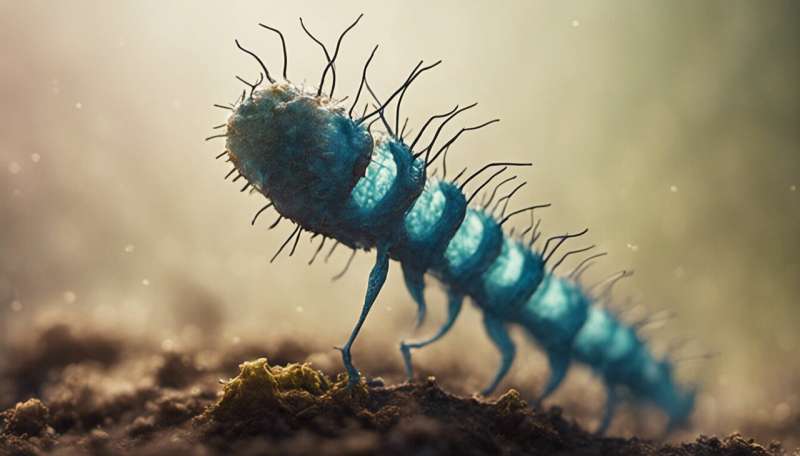Zombie caterpillar fungus may contain anti-cancer drug – but there are still questions to be answered

Spores released by parasitic fungi of the group cordyceps infect insect hosts, causing the fungus to grow inside them. Eventually this kills the host, but a bizarre twist is that before they die their behaviour is changed to assist the release of new fungal spores.
This conversion of the insect host into a "zombie" has inspired at least one sci-fi novel and film (The Girl with All the Gifts) as well as a computer game (The Last of Us). The premise of these stories is that mutant fungi can infect humans and turn them into zombies.
While infection of humans remains science fiction, a real example was presented by David Attenborough in the BBC Planet Earth series. Just before dying, an infected ant was induced to climb to the top of a plant in the rainforest and clamp itself on with its pincers. Gruesomely, a fungal fruiting body then grew out of the ant's head to release its spores downward over a wide area.
Another cordyceps fungus that infects caterpillars in Tibet is much prized in traditional Chinese medicines and used to treat many ailments. Because of their scarcity, the caterpillars, with fungus still attached, can be worth up to three times their weight in gold.
My colleagues and I have now explained how the zombie fungus could produce health benefits and even be useful against cancer. Unfortunately, the answer means it could be tricky to produce a safe, effective drug from cordyceps.
Warning: battery low
So why might cordyceps fungi be medically useful? They contain a molecule called cordycepin, and several recent studies have revealed that cordycepin switches on a cellular protein called AMPK, a protein I first defined in research conducted at the University of Dundee in the 1980s.
AMPK has been described as a magic bullet for health. Studies in animals have shown that drugs that switch on AMPK can reverse some types of diabetes and cancer, protect against arterial and heart disease, and even extend lifespan. So the health benefits of cordycepin might be due to its ability to switch on AMPK. But exactly how it did that has been a mystery—until now.
Our recent research shows that if cells are supplied with cordycepin they will convert it into a chemical called CMP. This is very similar to another chemical that the body produces naturally and has the same effect of switching on AMPK, which happens when cells are low on energy. CMP tricks cells into thinking they are running out of energy, even though they are not.
While switching on AMPK in this way might have many desirable effects, the problem is that cells also convert some of the cordycepin to another chemical called CTP. This causes problems with cell growth and division that may eventually cause the cells to die, a so-called "cytotoxic" effect. This might even be how the parasitic fungus finally kills its insect host.
Unfortunately, the levels of cordycepin needed to produce the positive effect of switching on AMPK are too close the levels that produce the negative effect of cell death to make the substance a safe drug for treating most diseases.
But there may still be a use for cordycepin in treating cancer because rapidly growing cancer cells are more vulnerable to cell death induced by cytotoxic drugs than healthy non-growing cells. So cordycepin could be added to the existing armoury of cytotoxic drugs used to treat cancer.
Paradoxically, however, the ability of cordycepin to switch on AMPK might be a bad thing in this case. We found that AMPK activation protected cells against cell death induced by cordycepin, and so might cause more cancer cells to survive treatment.
Provided by The Conversation
This article is republished from The Conversation under a Creative Commons license. Read the original article.![]()



















